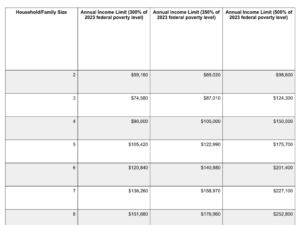N.H. eyes small expansion of Education Freedom Accounts
Since their adoption in 2021, Education Freedom Accounts (EFAs) have offered new educational opportunities for Granite State families.
An EFA is a government-approved savings account that can be used to access a wide range of educational opportunities outside a family’s designated public school district. If eligible, parents can direct their state funded per-pupil adequate education grant, an amount that averaged $4,857 as of 2022, toward their chosen alternative, provided those alternatives meet the state-set qualifications.
Instead of going directly to a student’s government-assigned public school, the student’s adequate education grant money is deposited into an account from which families can draw to pay for a variety of education-related expenses, including tuition, textbooks, technology, special education services, and more.
To qualify, a student must be a New Hampshire resident eligible to enroll in a public elementary or secondary school. Additionally, the student’s family household income at the time of application for an EFA must be 300% of the federal poverty level or less, as established annually in the Federal Register by the United States Department of Health and Human Services.
School choice supporters had high hopes of expanding EFA eligibility this session. Arkansas, Florida, Iowa, and Utah all passed laws this year to make all K-12 students eligible for an education choice option. Arizona and West Virginia already had universal choice programs.
Several variations of EFA expansion bills were introduced in the Legislature this year, but after May 18, only one option remains.
House Bill 464, which passed the House, would have expanded EFA access by adding a list of eligibility criteria with no family income cap. Those criteria include being homeless, in foster care, in a family of migratory workers, in a military family, learning English as a second language, being persistently bullied or disabled, living within the geographic boundaries of a low-performing or persistently dangerous school, being eligible for free or reduced price meals, or having a documented educational hardship.
The Senate Education Committee voted 5-0 to recommend that the Senate kill HB 464, which it did on May 18. That leaves House Bill 367 as the last option for making EFAs available to more students.
As introduced, HB 367 would have expanded eligibility for an EFA to households making no more than 500% of the federal poverty level.
However, by a vote of 187-184 the House cut the income cap down to 350% of the federal poverty level. This version of HB 367 received a 3-2 “ought to pass” recommendation from the Senate Education Committee, and the Senate passed the bill on a 14-10 vote on May 18. It goes to the Senate Finance Committee next.
Expanding EFA eligibility to 350% of the federal poverty level would increase the eligibility level for a two-person household by $9,860, for a three-person household by $12,430, and for a four-person household by $15,000.
Below are the maximum eligible income levels under both versions of this proposed expansion versus the current eligibility standard.

The bump from 300% to 350% of the federal poverty level represents a 16.6% increase in the EFA income cap. That’s a small bump, especially considering the huge gains made in other states this year. But it’s the only option that remains for New Hampshire in 2023.



